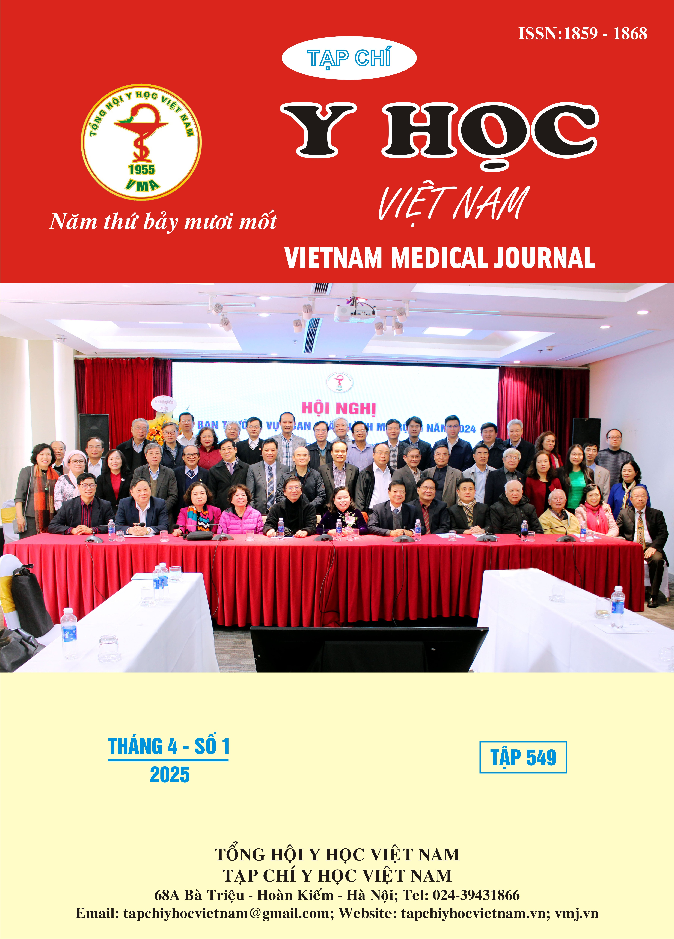HISTOPATHOLOGICAL CLASSIFICATION OF ADRENAL CORTEX LESIONS AND TUMORS ACCORDING TO THE CURRENT WHO CLASSIFICATION
Main Article Content
Abstract
Background: In the 5th Edition of the World Health Organization Classification of Endocrine and Neuroendocrine Tumors, adrenal cortical tumors have undergone significant changes and updates, both in terminology and classification. Accurate diagnosis and prompt treatment of lesions in this organ, which relies on computed tomography imaging, histopathological features and new classification, are essential as they greatly impact the responsiveness and survival of patients, especially in the lesions that need to be differentiated between benign and malignant. Aim: The aim of the study was to investigate some general (age, gender, site, size), histopathological, computed tomography characteristics and classification of adult adrenal cortical tumors using 2022 WHO Classification of Endocrine Tumors. Methods: A multicenter retrospective descriptive cross-sectional study on 136 adult patients having adrenal cortical tumors surgically treated at the University Medical Center of Ho Chi Minh City and 30-4 Hospital from January 2019 to June 2024. Results: The patient age ranged from 23 to 84 years, with the 40–64-year age group comprising the largest proportion (58.1%). The ratio of female to male was more than two-fold. Among the tumors, ACA constituted the majority (78.7%) of the benign group, while other benign lesions as nodular disease, hyperplasia, cyst, myelolipoma accounted for smaller proportion (0.7-10.3%). Three ACC cases were identified, consisting of one case with conventional subtype and other two cases with oncocytic subtype. Key histopathological features related to the distinction between benign from malignant tumors were mitotic rate, atypical mitoses, necrosis, diffuse growth pattern, clear cell component, capsular and vascular invasion. The use of multiparametric assessment tools including the Weiss system, modified Weiss system, Lin-Weiss-Bisceglia system, Reticulin algorithm and Helsinki scoring could aid the diagnosis of borderline cases. In computed tomography imaging, a size threshold of 4 cm and an attenuation of 20 HU, along with the APW of 60% and RPW of 40%, provided useful criteria for differentiating benign from malignant lesions. Conclusions: This study described the histopathological features and classification of adrenal cortical lesions/tumors as per the 2022 WHO classification of tumors. In addition, a multidisciplinary (histopathological and radiological) and multiparametric approach was crucial for accurate diagnosis, especially in borderline cases. Relevance for patients: The use of the new WHO classification of endocrine and neuroendocrine tumors, in combination with radiological aspects of the patients, could provide a better diagnosis of adrenal cortical tumors.
Article Details
Keywords
adrenal cortical tumors, histopathological classification, computed tomography imaging
References
2. Ebbehoj A, Li D, Kaur RJ, et al. Epidemiology of adrenal tumours in Olmsted County, Minnesota, USA: a population-based cohort study. Lancet Diabetes Endocrinol. Nov 2020;8(11):894-902. doi:10.1016/s2213-8587(20)30314-4
3. Liêm TT. Đặc điểm giải phẫu bệnh u tuyến thượng thận. Đại học Y dược TP.HCM; 2007.
4. SEER*Explorer. An interactive website for SEER cancer statistics [Internet]. Updated March 1 2023. Accessed August 17 2023 hscge.
5. Mete O, Erickson LA, Juhlin CC, et al. Overview of the 2022 WHO Classification of Adrenal Cortical Tumors. Endocr Pathol. Mar 2022;33(1): 155-196. doi:10.1007/s12022-022-09710-8
6. Bechmann N, Moskopp ML, Constantinescu G, et al. Asymmetric Adrenals: Sexual Dimorphism of Adrenal Tumors. J Clin Endocrinol Metab. Jan 18 2024;109(2):471-482. doi:10. 1210/clinem/dgad515
7. Grabek A, Dolfi B, Klein B, Jian-Motamedi F, Chaboissier MC, Schedl A. The Adult Adrenal Cortex Undergoes Rapid Tissue Renewal in a Sex-Specific Manner. Cell Stem Cell. Aug 1 2019;25(2):290-296.e2. doi:10.1016/j.stem.2019.04.012
8. Goel D, Enny L, Rana C, et al. Cystic adrenal lesions: A report of five cases. Cancer Rep (Hoboken). Feb 2021;4(1):e1314. doi:10.1002/ cnr2.1314
9. Espiard S, Drougat L, Libé R, et al. ARMC5 Mutations in a Large Cohort of Primary Macronodular Adrenal Hyperplasia: Clinical and Functional Consequences. J Clin Endocrinol Metab. Jun 2015;100(6):E926-35. doi:10.1210/ jc.2014-4204
10. DeLellis RA. Parathyroid tumors and related disorders. Mod Pathol. Apr 2011;24 Suppl 2:S78-93. doi:10.1038/modpathol.2010.132


